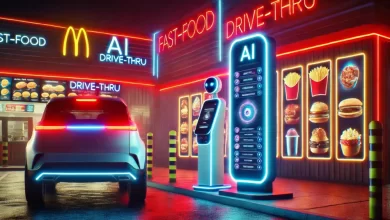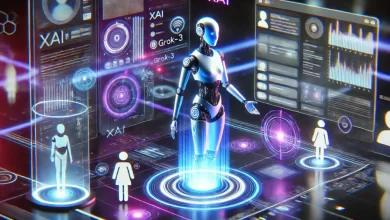Anthropic’s New Claude Models Bridge the Gap Between AI Power and Practicality

Anthropic has recently major updates revealed to its Claude AI model family. The announcement introduced an enhanced version of Claude 3.5 Sonnet and debuted a new Claude 3.5 Haiku model, marking significant advancements in both performance capabilities and cost-efficiency.
The release represents a strategic advancement in the AI landscape, particularly notable for improvements in programming capabilities and logical reasoning. As companies across the industry continue to push the boundaries of AI development, Anthropic’s latest release stands out.
Performance breakthroughs
The enhanced models show notable improvements in multiple benchmarks, with the new Haiku model achieving particularly notable results. On programming tasks, the performance of the updated Sonnet model on the SWE Bench Verified Test increased to 49.0%, setting a new standard for publicly available models, including specialized programming systems.
Cost efficiency appears to be a crucial aspect of these developments. The new Haiku model delivers performance comparable to the previous flagship Claude 3 Opus, while operating costs remain significantly lower. With prices set at $1 per million input tokens and $5 per million output tokens, organizations can optimize their AI implementations through features such as prompt caching and batch processing.
Benchmark improvements extend beyond programming capabilities. The models show improved performance in areas such as general language comprehension and logical reasoning. On the TAU Bench, which evaluates tool adoption opportunities, Sonnet showed substantial improvements across industries, including a notable increase from 62.6% to 69.2% in retail applications.
These developments indicate a shifting paradigm in AI development, where high-performance capabilities no longer necessarily come with prohibitive costs. This democratization of advanced AI capabilities could have far-reaching implications for companies and developers looking to implement AI solutions.

Source: Anthropic
Computer interaction
Rather than developing narrow, task-specific tools, the company took a broader approach by equipping Claude with general computing skills. This innovation allows AI models to interact with standard software interfaces originally designed for human users.
The cornerstone of this advancement is a new API that allows Claude to directly sense and manipulate computer interfaces. This system allows the AI to perform actions such as mouse movements, element selection and text input via a virtual keyboard. The technology represents a step toward more intuitive collaboration between humans and AI, enabling the translation of natural language instructions into concrete computer actions.
However, current options are both promising and limited. Although Claude 3.5 Sonnet achieved a score of 14.9% in the ‘screenshots only’ category of the OSWorld benchmark (nearly double that of the next best AI system), this performance still indicates significant room for improvement compared to human capabilities. Basic actions that humans perform instinctively, such as scrolling and zooming, remain a challenge for the AI system.
Market impact and applications
The business implications of these developments extend across multiple sectors. Organizations now have access to advanced AI capabilities at a more manageable cost, potentially accelerating AI adoption across industries. The improved programming capabilities primarily benefit software development teams, while the improved language understanding benefits customer service and content generation applications.
In terms of industrial positioning, Anthropic’s approach is distinguished by its focus on practical applicability and cost-effectiveness. The combination of improved performance metrics and reasonable operational costs positions these models as viable solutions for both large enterprises and smaller organizations exploring AI implementation.
Practical applications include several usage scenarios:
- Software development: Improved code generation and debugging capabilities
- Customer service: More advanced chatbot interactions
- Data Analysis: Improved logical reasoning for complex data interpretation
- Business process automation: Direct manipulation of the computer interface for routine tasks
The accessibility of these advanced features, especially through major cloud platforms like Amazon Bedrock and Google Cloud’s Vertex AI, simplifies integration for organizations already using these services. This widespread availability, combined with flexible pricing models, signals a potential acceleration of AI adoption in enterprises.
Looking ahead
The release of these enhanced models represents more than just incremental improvements in AI technology. It heralds a future where AI systems can more naturally integrate with existing computing systems and workflows. Although limitations currently exist, especially in the area of human-like computer interactions, the foundation has been laid for further progress in this direction.
Anthropic’s cautious implementation approach, which recommends developers start with low-risk tasks, demonstrates an understanding of both the technology’s potential and its current limitations. This thoughtful attitude, combined with transparent performance metrics, helps set realistic expectations for organizational adoption.
The implications of the development roadmap are significant. With the knowledge limits for the Haiku model stretching to July 2024, we see a trend towards more current and relevant AI systems. This progress suggests that future iterations could further narrow the gap between AI knowledge bases and real-time information needs.
Key considerations for future developments include:
- Continuous refinement of computer interaction capabilities
- Further optimization of the performance-cost ratio
- Improved integration with existing business systems
- Expanded applications in new industries and use cases
The bottom line
Anthropic’s latest releases mark a major milestone in the evolution of AI technology, striking a critical balance between cutting-edge capabilities and practical implementation considerations. While challenges remain in realizing human-like computing interactions, the combination of improved performance metrics, innovative features, and accessible pricing models is laying a foundation for transformative applications across industries, potentially changing the way organizations implement AI into their daily operations approach.






